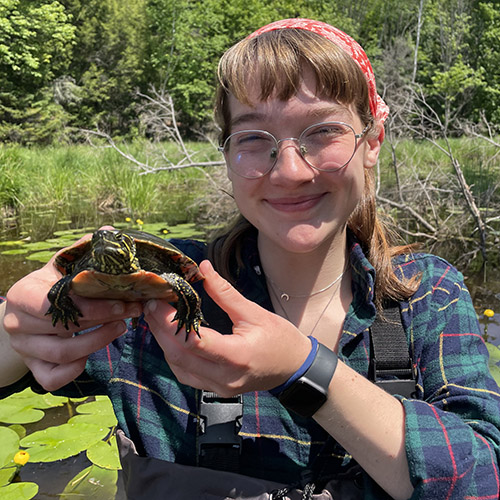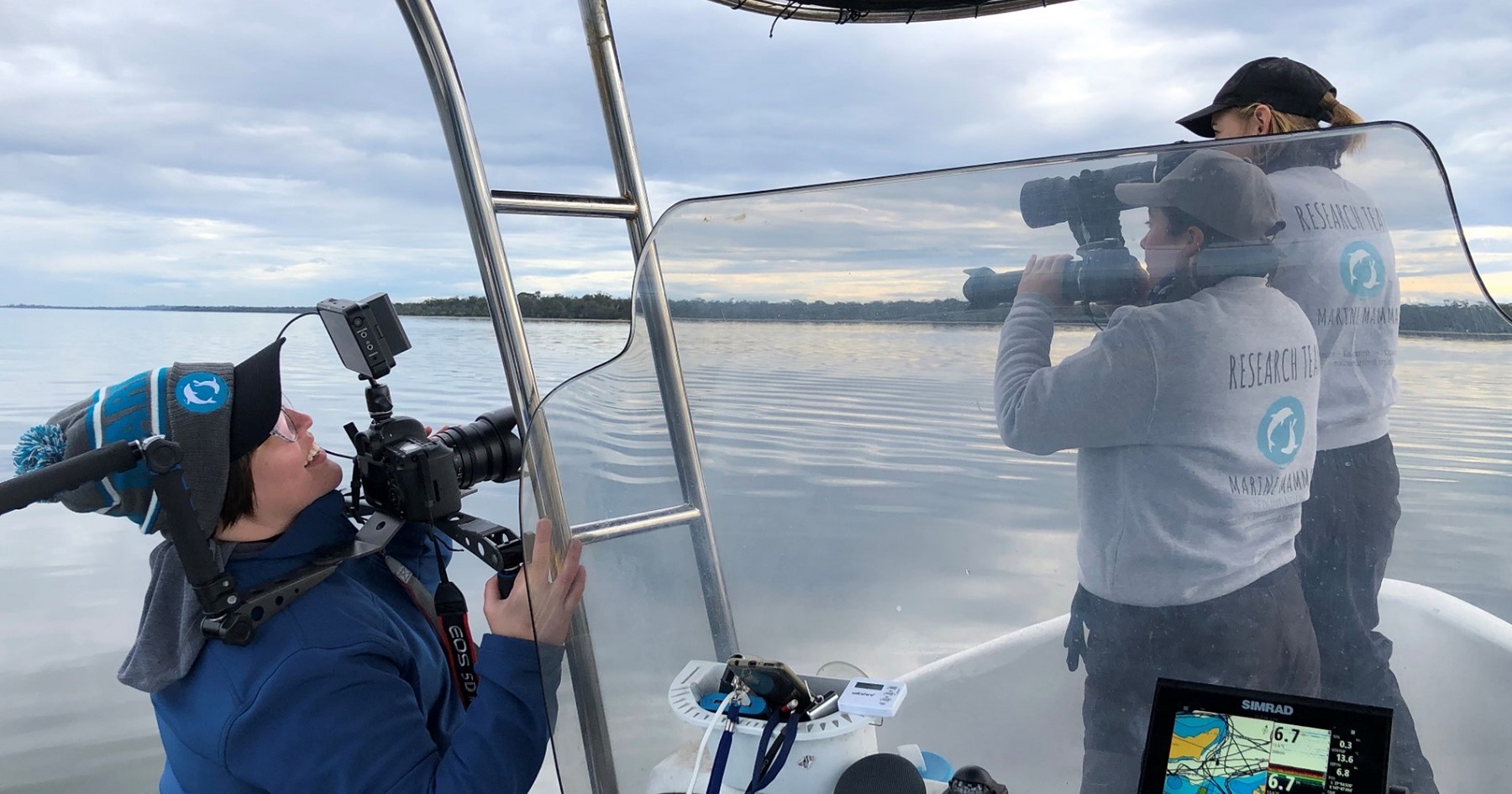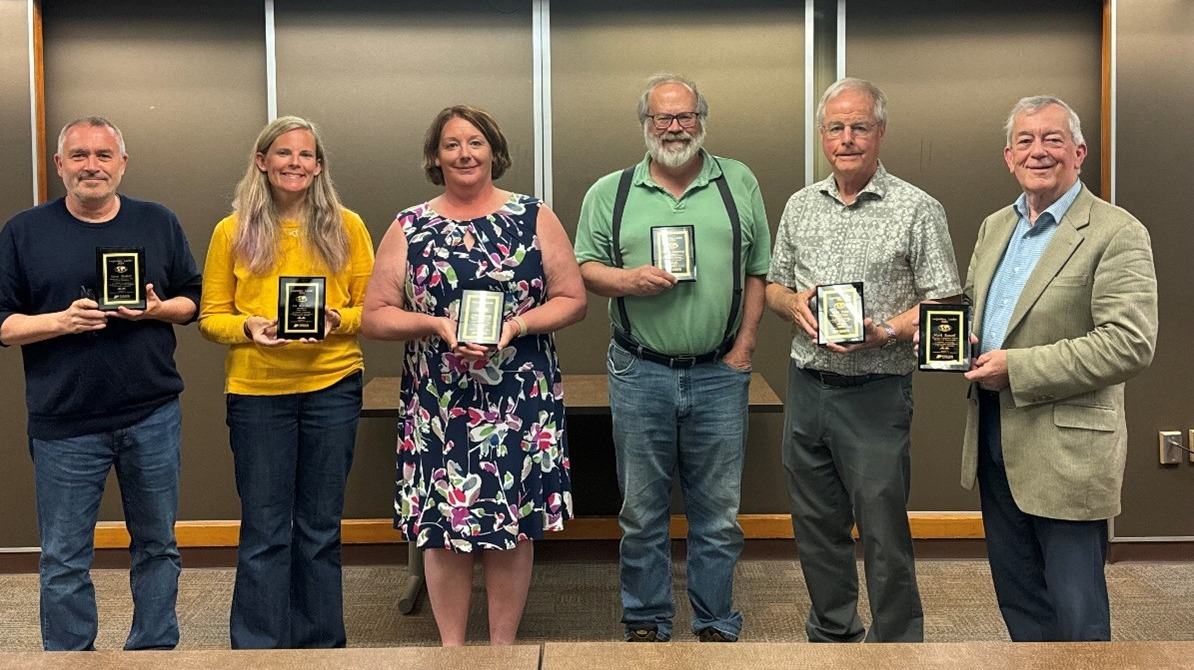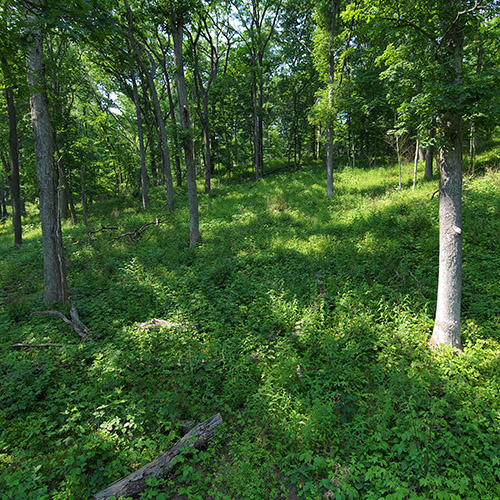Scientists strive to understand full ecological impacts of plastics on aquatic food webs
Scientists have learned over the years that when aquatic organisms such as zooplankton become exposed to microplastics, they eat poorly. Research at Purdue University now shows that their plastic-induced eating difficulties also limit the ability of zooplankton to control algal proliferation.
“If the control of algae by zooplankton is confounded by the presence of microplastics, that could be a cause for concern,” said Tomas Höök, professor of forestry and natural resources at Purdue.
When algae bloom out of control, this presents a problem because some species produce toxins. Also, algal blooms can be associated with pea-soupy, unattractive bodies of water and contribute to hypoxia, a low-oxygen condition that may lead to fish kills.
Zooplankton are tiny creatures that live in watery environments and form the base of the food web in many aquatic environments. The organisms examined for the study were two common types of crustaceous zooplankton that differ in size and feeding behavior.
The study highlights how rife plastic has become in the environment. “There’s plastic dust in the air. We’re all potentially breathing plastic now. Plastics are everywhere,” said Höök, who directs the Illinois-Indiana Sea Grant College Program. This includes a lot of the food we eat.
“The flow of plastics through the environment is reaching every part of the world,” noted Chris Malinowski, director of research and conservation at the Ocean First Institute. Plastics are found atop snowcapped mountain peaks and on the ocean floor. The rivers in between serve as the vessels that help spread microplastics.
Höök, Malinowski and two co-authors presented their findings in the journal Science of the Total Environment. The study was among the first to examine the effects of microplastics in a simple food web design. This involved investigating impacts into how zooplankton feed on algae in the presence of different environmentally realistic microplastic concentrations, and when faced with risk of predation from fish.
“Microplastics aren’t just having an effect on consumer organisms. They also have the potential to release algae from predatory control,” Höök said.
When the researchers noticed increased algal densities in their laboratory experiment after adding higher microplastic concentrations, they were uncertain about its cause. Either the microplastics were getting in the way of zooplankton and preventing normal consumption rates of algae, or they served as better surfaces for algal growth.
Follow-up tests showed that adding microplastics without the zooplankton failed to increase algae production. The microplastics were somehow affecting predation on algae. “That was somewhat surprising,” noted Malinowski, a former Purdue postdoctoral scholar.
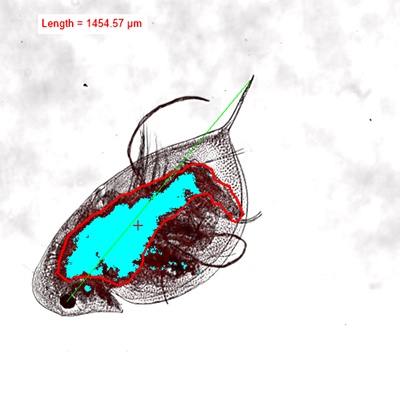 This overlay image of a zooplankton from a fluorescence microscope shows all of the blue as algae and the red dots as microplastics. Zooplankton exposed to high microplastic concentrations often have many microplastic particles in their guts. The image measures about five-hundredths of an inch across. (Image provided by Chris Malinowski)
This overlay image of a zooplankton from a fluorescence microscope shows all of the blue as algae and the red dots as microplastics. Zooplankton exposed to high microplastic concentrations often have many microplastic particles in their guts. The image measures about five-hundredths of an inch across. (Image provided by Chris Malinowski) Plastics can accumulate in biological tissue similar to mercury and other heavy metals. But plastics also cause gut blockage and related effects that impact feeding, he said. And even though plastics break down in the environment into smaller and smaller fragments, which is not necessarily a good thing, the process plays out over many years.
“Different plastic products that we use every day, like cups, straws and bags, don’t truly go away,” Malinowski noted. Eventually, they degrade into microplastic particles, which by definition measure less than five millimeters, the approximate size of a pencil lead. Scientists find it difficult to easily sample particles of that size in the environment.
“In terms of the impact that microplastics have in the environment, there’s a level of uncertainty with these very small particles, in part simply because they are just very small, and also because they take on different shapes, sizes, configurations and surface properties,” Malinowski noted. “All of the research that has gone into this already and all that needs to be done is happening at too slow of a rate relative to the amount of plastic being produced, and this is alarming because we don’t truly understand all of the consequences.”
Co-authors of the paper include Catherine Searle, associate professor of biological sciences at Purdue; and James Schaber, formerly of Purdue’s Bindley Bioscience Center. The work was funded by Purdue University’s College of Agriculture and the Department of Forestry and Natural Resources, and by the U.S. Department of Agriculture.
(Banner photo by Tom Campbell)
